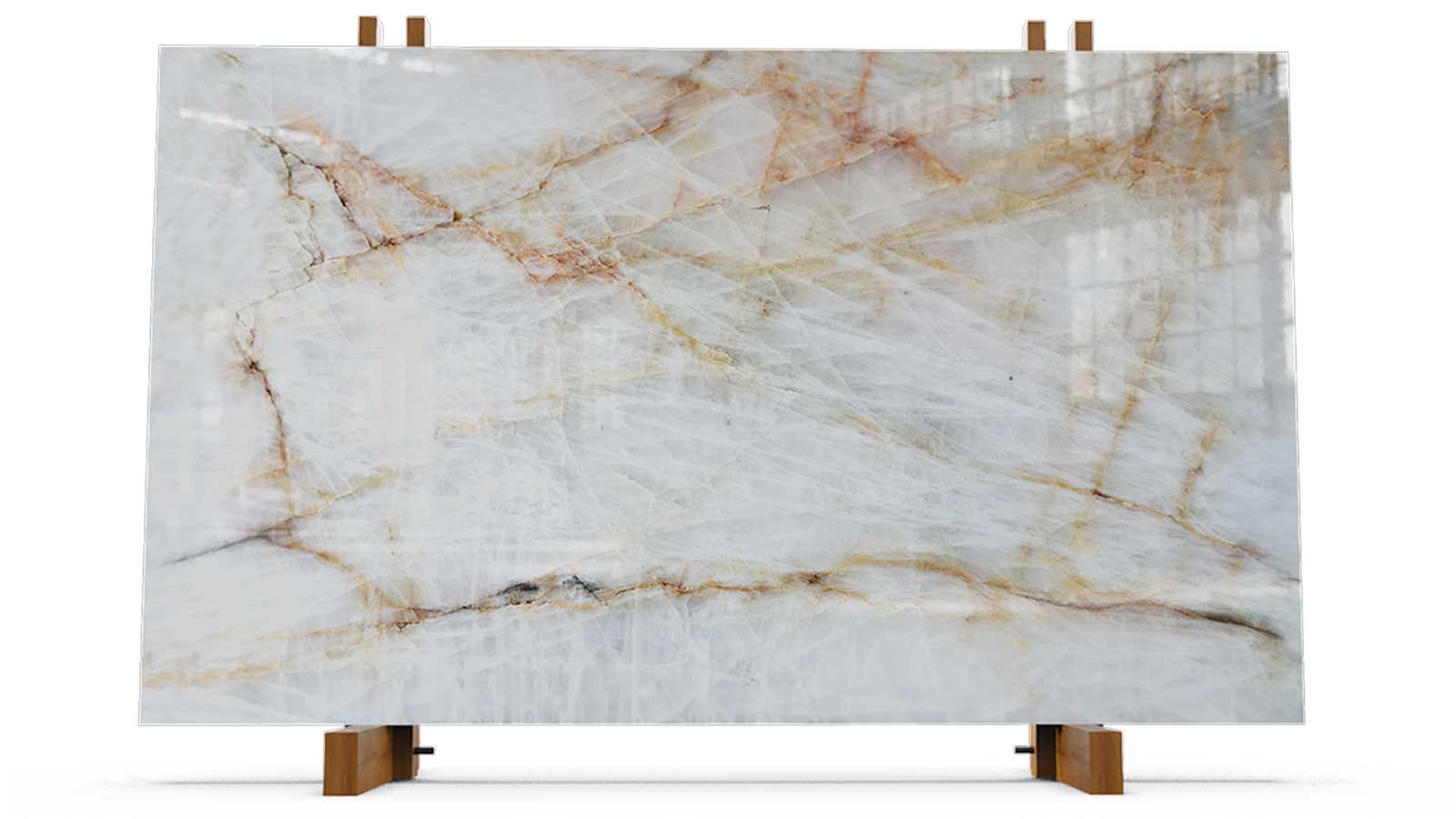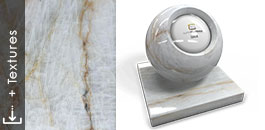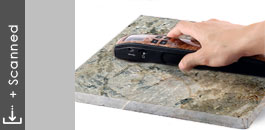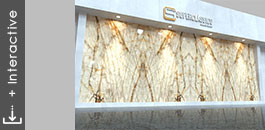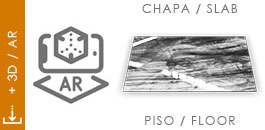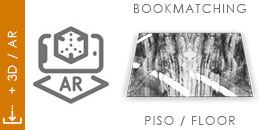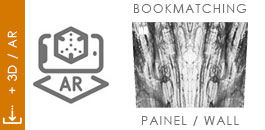Lumix: A Natural Crystal with Unique Characteristics
Lumix is a variety of natural crystal that stands out for its exceptional characteristics, making it a popular choice in various interior design and decoration projects. Below, we present a detailed analysis of this fascinating rock, covering its mineralogical properties, uses, extraction sites, care and maintenance, as well as technical and historical information.
Characteristics of Lumix
Mineralogical Composition
Lumix is predominantly composed of quartz crystal. This composition gives the rock a translucent and shiny appearance, which is one of its most distinctive features. Quartz, known for its hardness and resistance, contributes to the durability of Lumix, making it ideal for various design and architectural applications.
Texture and Color
One of the most striking characteristics of Lumix is its coloration. Predominantly white to light gray, Lumix features natural veins that can vary in darker or coppery tones. These veins add an artistic and sophisticated aspect to the rock, making each piece unique. The variation in colors and patterns makes Lumix a versatile choice for different design styles, from classic to contemporary.
Translucency
Translucency is one of the most impressive properties of Lumix. As a crystal, Lumix allows light to pass through, creating stunning visual effects when backlit. This feature is particularly valued in applications where lighting is used to highlight the beauty of the rock, such as in kitchen countertops, tabletops, and wall coverings.
Hardness
The hardness of Lumix is another notable quality. According to the Mohs scale, which measures scratch resistance, Lumix has a high hardness, typical of quartz crystals. This property gives it durability and scratch resistance, making it suitable for high-traffic and heavy-use areas.
Uses of Lumix
Interior Design
Lumix is widely used in interior design projects. Its aesthetic and physical properties make it an ideal choice for kitchen countertops, tabletops, bathrooms, and wall coverings. The translucency of Lumix allows for the creation of unique visual effects, especially when backlit, adding a touch of elegance and sophistication to spaces.
Decoration and Art
In addition to its applications in interior design, Lumix is frequently used in decorative elements and art pieces. Its beauty and distinctive appearance make it perfect for enhancing the elegance of spaces. Art pieces made with Lumix can transform a space, adding an element of luxury and exclusivity.
Extraction Sites
Lumix is extracted from quarries located in Brazil, a country known for its abundance and variety of exotic natural stones. Brazilian quarries produce some of the most beautiful and unique crystals in the world, and Lumix is no exception. The quality of the crystal extracted from these quarries contributes to Lumix’s popularity in high-end design projects.
Care and Maintenance
To preserve the beauty and integrity of Lumix, it is important to follow some care and maintenance guidelines.
Cleaning
Regular cleaning is essential to keep Lumix in good condition. It is recommended to use water and neutral soap to clean the surface. Abrasive products should be avoided as they can damage the surface and compromise the appearance of the crystal.
Sealing
Although Lumix is naturally resistant, applying an appropriate sealant is advisable to protect the rock against stains and liquid absorption. Sealing helps maintain the appearance of Lumix for longer and facilitates cleaning.
Damage Prevention
To avoid damage to Lumix, it is important to protect it from aggressive chemicals and high temperatures. These factors can compromise the integrity of the surface and reduce the material’s durability. It is advisable to use bases and supports to avoid direct contact with hot objects.
Installation
The installation of Lumix should be carried out by experienced professionals. Precision in cutting and fixing is essential to fully explore the aesthetic and functional qualities of this rock. A well-executed installation ensures a perfect finish and the durability of the material, allowing Lumix to shine in its full potential.
Technical Analysis
Geological Classification
Geologically, Lumix is classified as a metamorphic rock. This classification is due to the process of quartz recrystallization under high pressure and temperature conditions. The result is a rock of homogeneous composition and crystalline structure, with exceptional physical and aesthetic properties.
Origin
The formation process of Lumix involves the recrystallization of quartz-rich sandstones over millions of years. These specific geological conditions result in the creation of a superior quality crystal, with a translucent appearance and natural veins that add depth and beauty to the rock.
Historical Information
The use of crystals in decoration and architecture dates back to ancient times. Ancient civilizations valued crystals not only for their beauty but also for their supposed energetic properties. Over the centuries, the use of crystals has evolved, and today Lumix is valued for its modern aesthetics and versatility in contemporary projects. Its growing popularity is a testament to its quality and visual appeal.
Conclusion
Lumix is a natural rock with unique characteristics, predominantly composed of quartz, sophisticated coloration, and high translucency. Its physical and aesthetic properties make it an excellent choice for a wide range of interior design and decoration applications. Extracted from quarries in Brazil, Lumix combines durability and beauty, making it a highly valued material in high-end projects.
Maintaining Lumix in good condition is simple with proper care and maintenance, ensuring its beauty remains intact over time. Professional installation is crucial to fully explore its qualities, resulting in perfect and durable finishes.
Geologically classified as a metamorphic rock, Lumix is the result of millions of years of natural processes, culminating in a material of incomparable beauty. Its history and modern use reflect its ability to transcend time and trends, becoming a timeless choice for those seeking elegance and exclusivity in their projects.
With all these qualities, Lumix continues to secure its place of prominence in design and decoration projects, providing environments of rare beauty and sophistication. If you are looking for a material that combines durability, aesthetics, and versatility, Lumix is the ideal choice to transform any space into a work of art.
Lumix: Properties and Applications
Due to its durability and beauty, Lumix is a popular choice for flooring and wall coverings in residential and commercial environments. Its translucency allows for the creation of impressive visual effects, especially in projects that utilize creative lighting. Lumix is also a preferred choice for tabletops and reception counters, where its sophisticated appearance can be fully appreciated.
Maintenance and Care of Lumix
To ensure the longevity of Lumix, it is important to follow proper maintenance practices. In addition to regular cleaning with water and neutral soap, applying specific sealants can help protect the surface against stains and damage. Damage prevention includes avoiding exposure to aggressive chemicals and high temperatures, which can compromise the integrity of the rock. The use of bases and supports for hot objects is highly recommended.
Professional Installation of Lumix
The installation of Lumix should be performed by qualified professionals to ensure a perfect finish and the durability of the material. Precision in cutting and fixing is crucial to fully explore the aesthetic and functional qualities of Lumix. Professional installation ensures that Lumix shines in its full potential, providing an elegant and durable look.
Geological Analysis of Lumix
Lumix is classified as a metamorphic rock, formed by the recrystallization of quartz-rich sandstones under high pressure and temperature conditions. This geological process, which occurs over millions of years, results in a superior quality crystal with a translucent appearance and natural veins that add depth and beauty to the rock. The homogeneous composition and crystalline structure of Lumix confer exceptional physical and aesthetic properties, making it an ideal choice for a variety of applications.
History and Evolution of Lumix Use
The use of crystals in decoration and architecture has a long history, dating back to ancient civilizations that valued crystals for their beauty and energetic properties. In modern times, Lumix has gained popularity due to its modern aesthetics and versatility in contemporary projects. Its ability to transcend time and trends reflects its quality and visual appeal, making Lumix a timeless choice for those seeking elegance and exclusivity in their projects.
Conclusion
Lumix is a natural rock with unique characteristics, combining durability, aesthetics, and versatility. With a predominantly quartz composition, Lumix features sophisticated coloration and high translucency, making it ideal for a wide range of interior design and decoration applications. Extracted from quarries in Brazil, Lumix is a highly valued material in high-end projects.
To maintain Lumix in good condition, it is essential to follow proper maintenance practices and ensure that installation is carried out by experienced professionals. With all these qualities, Lumix continues to secure its place of prominence in design and decoration projects, providing environments of rare beauty and sophistication. If you are looking for a material that combines durability, aesthetics, and versatility, Lumix is the ideal choice to transform any space into a work of art.

Want to know more about this and other SuperClassico materials?
Ask our AI your question here!
BookMatching
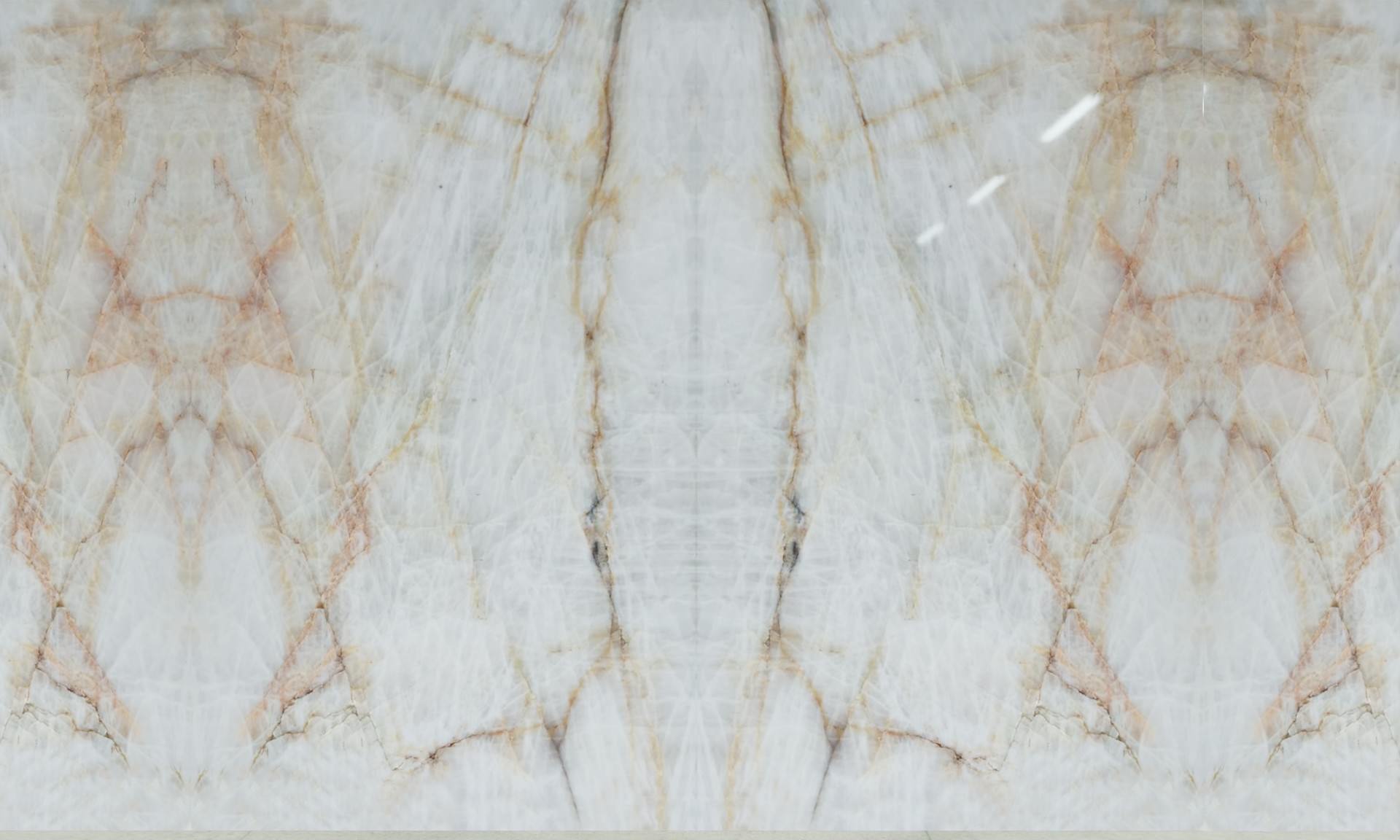 Vertical
Vertical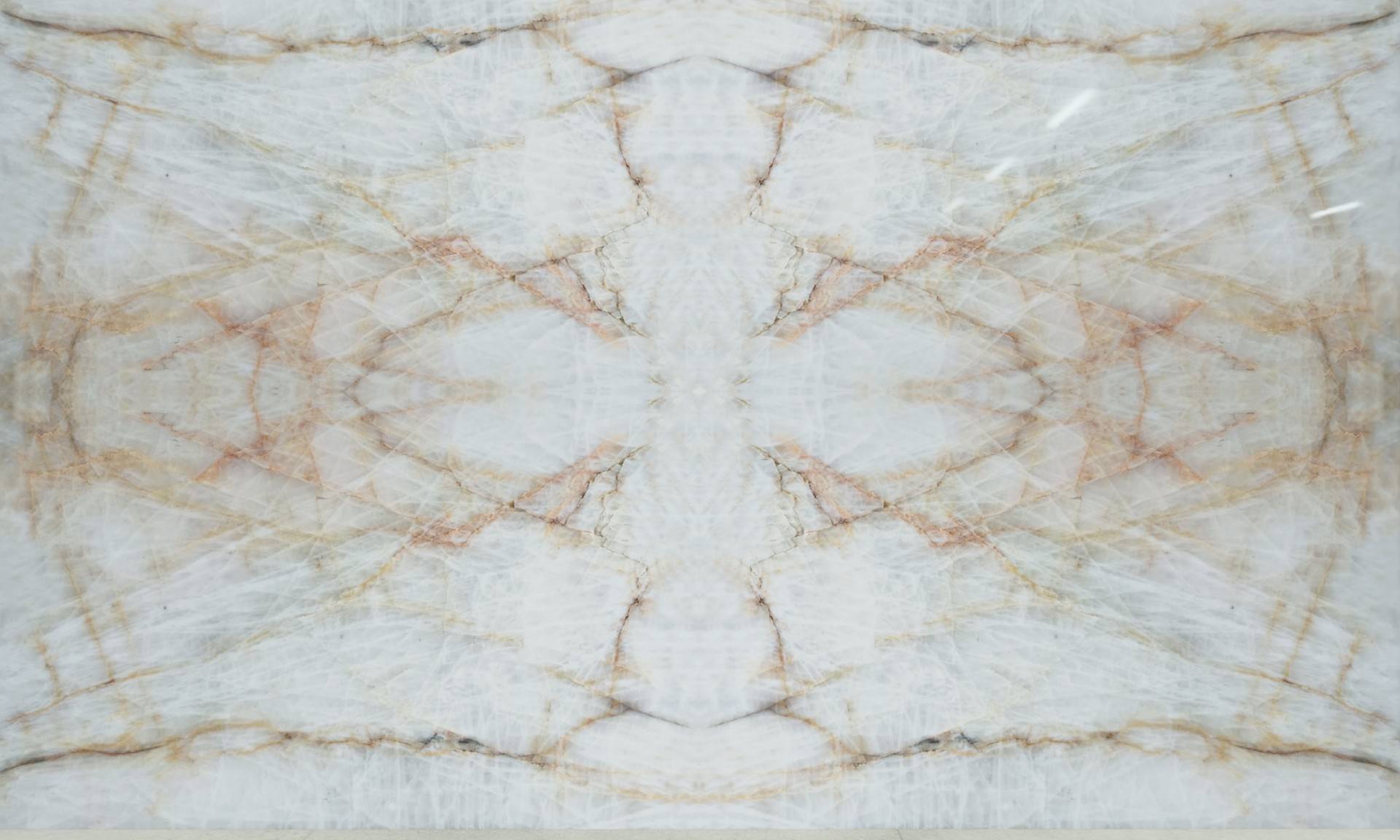 Horizontal
HorizontalFor Designers and Architects
| PETROGRAPHY CLASSIFICATION | CRYSTAL | |
| NORMA | TESTS | RESULTS |
| ABNT NBR 12766 | Water Absorption | 0,40% |
| ABNT NBR 12766 | Apparent Dry Density | 2560 kg/m³ |
| ABNT NBR 12767 | Compressive Strength83 | 131 mpa |
| ABNT NBR 12763 | Flexural Strength | 10,3 mpa |
| Abrasion Strength | 0,011 (cm²/cm³) | |
To simulate how a particular material would look as a floor, tabletop, or countertop in your home, use Augmented Reality technology on your smartphone. It’s easy! Just click on the “View in your space” button and you’ll be able to see the virtual object in your real environment. Try it now!
3D/AR View
Click on the CARDS below and choose different options to simulate the material with AR in your environment through your Smartphone’s camera.
Classification
Tipo: CRYSTAL
About
Lumix – A Natural Exotic Stone by SuperClássico Natural Stones
Composition
Surface Finishings
Polished
It is the “shiny” surface that results in the plate when receiving the complete finish, that is, until the last grain. Depending on its composition, the polished material may have a higher or lower brightness intensity.
Brushed
It is the resultant surface in the sheet when it receives roughing treatment performed by steel brushes or synthetic materials. Different brushing models can be executed, with greater roughness, medium and few.
Soft Leather
It is the resultant surface in the sheet when it receives roughing treatment performed by steel brushes or synthetic materials. Carried out with a brush of low roughness, which gives it a lightly textured look like fabric.
Flamed
It is the resultant surface in the plate when it receives heat treatment (burned with torch specially developed for the function) that takes out small flakes of the same, making the surface slightly irregular producing the impression that it is rustic.
Honed
It is the resultant surface on the sheet when receiving abrasive grinding wheels up to the grain 120. This grain defines the surface finish limit either as anti-slip or even for the application of resin and subsequent polishing.
Leather Finish
It is the resultant surface in the sheet when it receives roughing treatment performed by steel brushes or synthetic materials. Depending on the type of brushes used you can still reproduce in some materials a surface with a design similar to natural leather.

